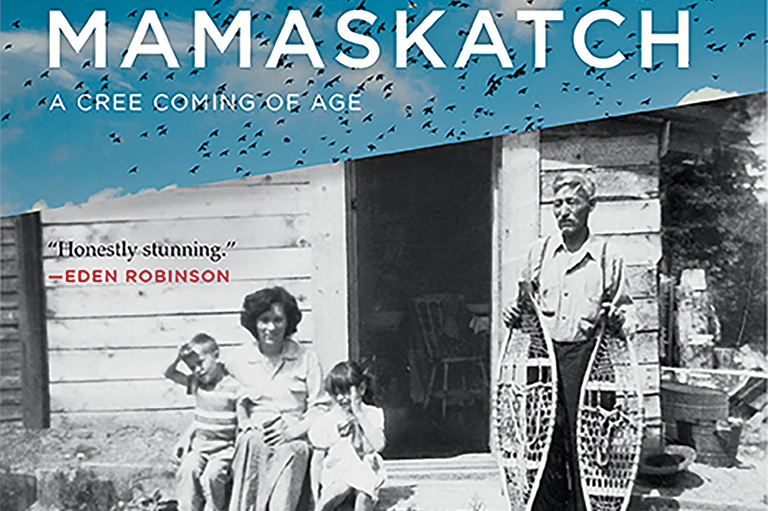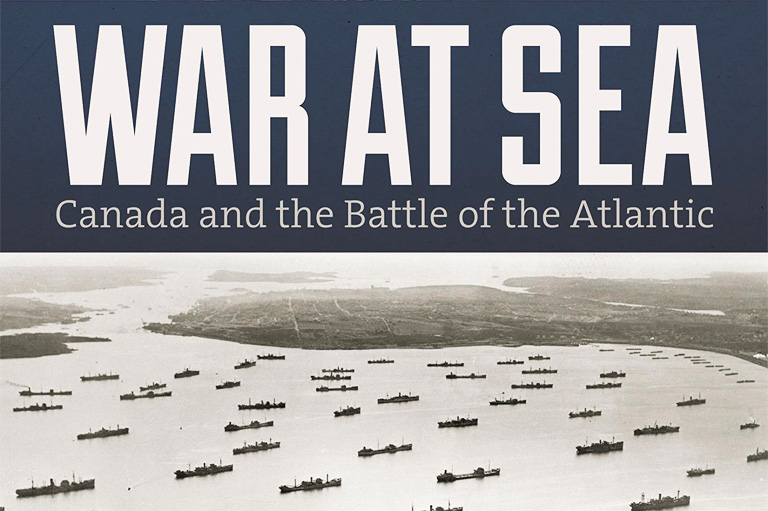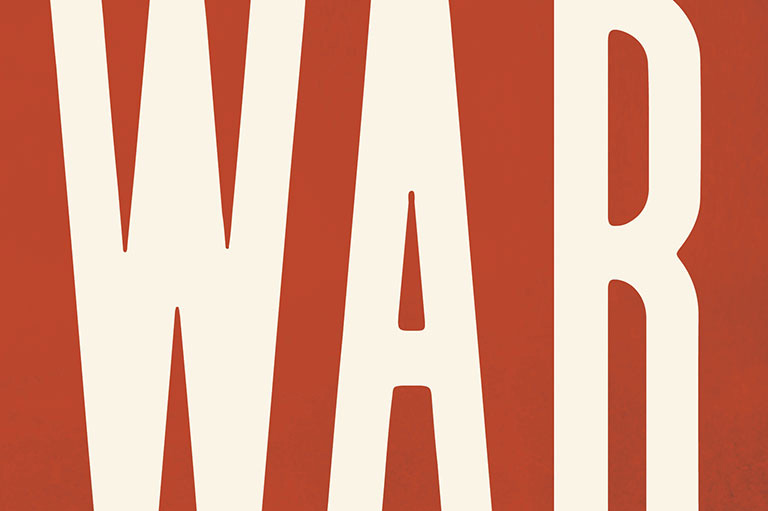Flights of Inspiration
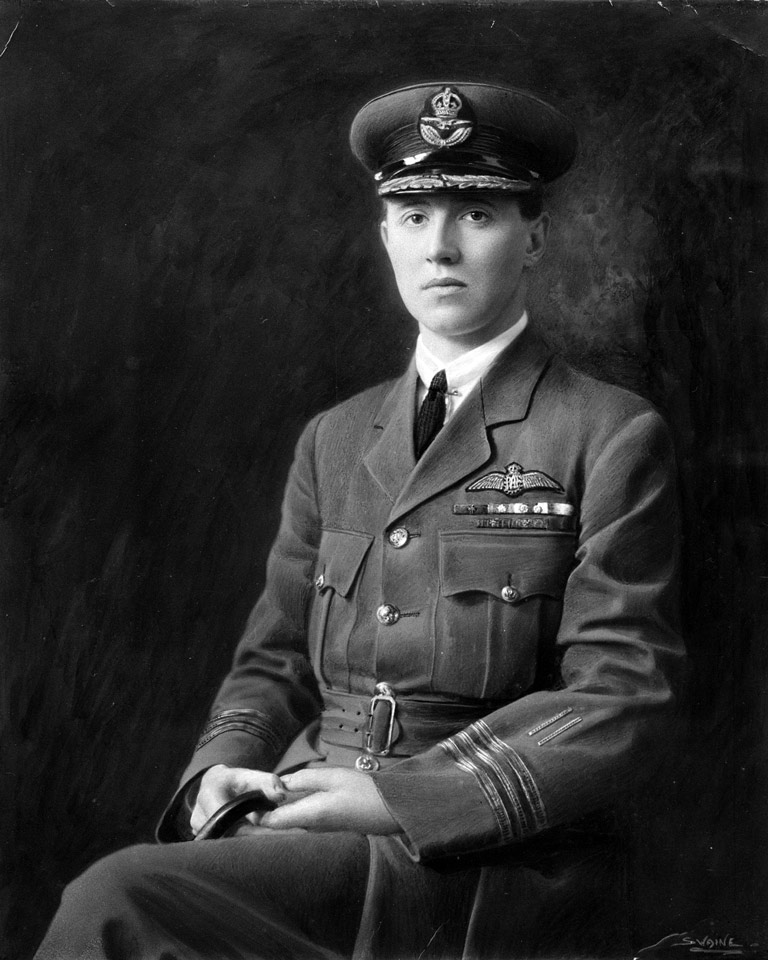
The Royal Canadian Air Force (RCAF) was formed in the wake of the First World War and with the growing recognition of the importance of aviation for diverse civilian and military purposes. Stories of the organization’s people, aircraft, operations, and technological innovations are told in the new book Pathway to the Stars: 100 Years of the Royal Canadian Air Force, by retired RCAF Lieutenant General Michael Hood and Canadian business leader Tom Jenkins, who has a decades-long involvement with the RCAF.
As the authors note, early in the First World War the Canadian Aviation Corps was an “absurdly small unit, made up of two officers and one mechanic” that purchased a single airplane and never saw battle. Instead, thousands of Canadians were trained and many Canadian pilots served with the British Royal Flying Corps or Royal Naval Air Service — including “an impressive total of eighty-two aces (each with ten or more victories).”
After a series of different Canadian aviation and air-defence organizations had been created in just a few years, the RCAF was officially born on April 1, 1924. Pathway to the Stars includes some three hundred photos and illustrations and was produced in partnership with the RCAF Foundation, itself formed in 2021 to recognize and to celebrate the air force. The following are a few of the book’s one hundred stories that together mark the RCAF’s centenary.
Pathway to the Stars
by Michael Hood and Tom Jenkins
William Barker: The Hero’s Hero
Billy Bishop called him the greatest pilot who ever lived. During the First World War, William Barker shot down fifty enemy planes, was decorated twelve times for bravery, and was even immortalized in Ernest Hemingway’s short story “The Snows of Kilimanjaro.” Despite being the most decorated Canadian in history, William Barker remains Canada’s unsung hero of the skies.
What drove a farm boy from Dauphin, Manitoba, to become a fighter pilot? Growing up, William George “Billy” Barker was an exceptional shot. Like Bishop, Barker served with the Canadian Mounted Rifles Regiment before deciding to become a pilot. He made his first solo flight after only fifty-five minutes of dual instruction and received his wings in 1917. After clocking over five hundred operational hours of flying, Barker became known as a gifted aerial tactician.
In dogfights, Barker was ruthless, calculating, and inventive. For his Christmas Day attack on a German airfield, Hemingway fictionalized Barker as “a bloody murderous bastard,” but he was much more than a cold-hearted warrior. Loved and admired by his men, Barker embodied the qualities of a military leader: a keen sense of self-sacrifice, the push to excel, and an audacity balanced by prudence. Barker once lost two wingmen on a mission and then vowed to take better care of his men. After that, no pilot he led into combat or plane he escorted was ever shot down.
For outstanding service, Barker was awarded the Distinguished Service Order and Bar, the Military Cross and two Bars, two Italian Silver Medals for Military Valour, and the French Croix de Guerre. He earned the Victoria Cross for fighting alone against a large formation of German Fokkers. Barker nearly died in the battle, sustaining injuries in both legs and a shattered elbow that left him a one-armed pilot. While recovering in London in 1919, Barker met Billy Bishop. After the war, the two men returned to Canada and formed a business partnership, Bishop-Barker Aeroplanes Limited.
Barker achieved many remarkable postwar firsts. When the aviation industry was in its infancy, he set up airports, was the first pilot to fly international mail between Toronto and New York, and flew the first commercial cargo between the United States and Canada. In 1919, he led an aerial demonstration at the Canadian National Exhibition in Toronto, flying in formation for the first time in Canada in front of a non-military audience.
In 1922, Bishop-Barker Aeroplanes ceased operations, and Barker rejoined the CAF. He served as wing commander and then as acting director, the highest-ranking position in the CAF, later becoming a liaison officer for the RCAF in England. He is credited with introducing parachutes into the RCAF, developing aerial strategic tactics, and creating Canada’s first aerobatic team.
After leaving the RCAF, Barker became the first president of the Toronto Maple Leafs. For the remainder of his life, he would struggle with his wartime injuries and adapting to civilian life. William Barker died at age thirty-five when he lost control of his Fairchild KR-21 biplane during a demonstration flight for the RCAF. His funeral was the largest state event in Toronto’s history, with fifty thousand civilians and two thousand in an honour guard attending. Sadly, Barker’s untimely death caused many of his accomplishments to fade from memory. His slip into obscurity ended in 2011 when a plaque was placed on his tomb in Toronto’s Mount Pleasant Cemetery, recognizing Barker as the “most decorated war hero in the history of Canada, the British Empire, and the Commonwealth of Nations.” In 1974, William Barker was inducted into Canada’s Aviation Hall of Fame.
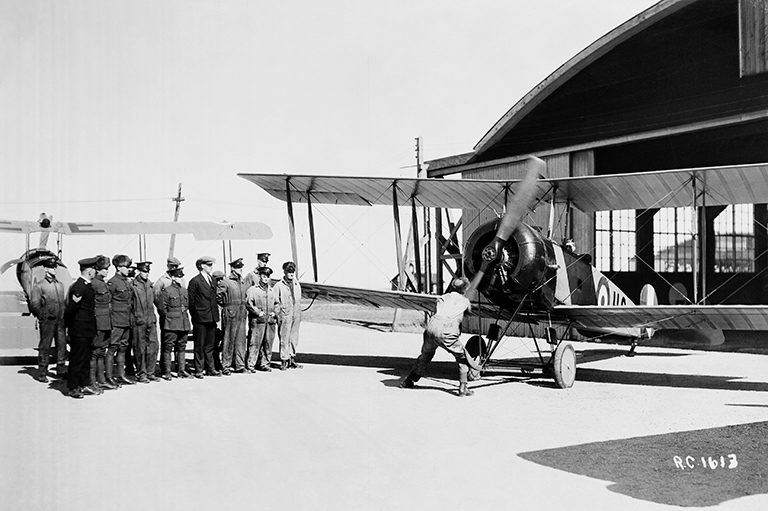
The Birth of the RCAF:
Establishing Air Power in Canada
The pride Canadian aircrews brought home after the First World War translated into the desire to have a national air force in Canada. In 1919, the Canadian government established an Air Board of seven members to control commercial and civil aviation. The board was also responsible for air defence, which led to the organization and administration of the Canadian Air Force (CAF) on February 18, 1920.
Despite the newly formed CAF, Canada was war-weary, and its government was leery about making investments in air defence. It was a widely held view at the time that “Canada would never need an air service.” But the secretary of the Air Board, John Armistead Wilson, had other ideas. At the core of his “airmindedness” was the belief that in a sparsely populated and vast country like Canada the air force would only survive if it were tied to civilian aviation and the aerospace industry. Considered by many to be the father of civil aviation in Canada, Wilson argued that, in order to remain relevant during peacetime, the CAF needed to perform civilian functions. And so the “bush pilots in uniform” flew on forest fire and maritime patrols, delivered mail, medical, and other supplies, and contributed to geological surveys and the aerial mapping of Canada.
At its inception, the CAF was given 1,340 officers and 3,905 non-commissioned members (NCMs) and operated out of Camp Borden, Ontario. Named after Sir Frederick William Borden, Canada’s former Minister of Militia, Camp Borden is considered the birthplace of the RCAF. The site was selected for a military aerodrome by the Royal Flying Corps (RFC) during the First World War. Camp Borden became the CAF’s training centre in 1920, with the Air Board offering a twentyeight- day flying course to any officer who had served in the RFC or Royal Naval Air Service (RNAS) during the war. The British government donated 114 aircraft, required equipment, and even hangars for the base. Taking over seaplane docks at Dartmouth and Sydney in Nova Scotia, the Air Board established new CAF bases in Vancouver and in Morely, Alberta, and Roberval, Quebec, with twenty-four Curtiss Flying Boats donated by the United States.
In 1923, the Department of Militia and Defence, the Department of Naval Service, and the Air Board merged to form the Department of National Defence (DND) in Canada. The CAF, which had mostly been small and nonpermanent, became responsible for all flying operations in Canada. The prefix “Royal” was added on approval from King George V, and its organization was made official on April 1, 1924. The RCAF continued to oversee civil flying until a Civil Aviation Branch of the DND was created in 1927, later becoming the Department of Transport.
The newly established RCAF was to be led by a director who reported to the Chief of the General Staff. It consisted of three parts: a permanent Active Air Force, an Auxiliary (part-time) Air Force, and a Reserve (non-active). On the day of its inception, a modest Active Air Force was 68 officers and 307 NCMs strong. The RCAF modelled its organization on the British RAF, having a similar insignia, ensign, and badges, and adopting the Latin motto per ardua ad astra, which translates to “through adversity to the stars.”
Another champion of air power in Canada was A.G.L. McNaughton, chief of the General Staff of the Canadian Army in 1929. Notably, McNaughton was also an electrical engineer who served as president of the National Research Council of Canada from 1935 to 1939 and who became Canada’s Minister of National Defence in 1944. McNaughton was aware of the importance of air defence, especially at home with its response to threats on Canadian coasts. In 1932, he launched a draft plan for the RCAF with its primary role as coastal defence and its secondary as an expeditionary force overseas. Prime Minister William Lyon Mackenzie King echoed McNaughton’s approach in his 1937 admission of protection “in a mad world” on the sea and in the air. That same year, the RCAF was given primary responsibility for the defence of Canada. With this came new investments for the RCAF, namely a tripled share of the defence budget.
In 1938, the Second World War was looming, and Canada’s air power was about to be thrust into action. Having established a peacetime professionalism and permanency, the RCAF would have to transform itself into a modern military power. This required building up its air strength quickly — a daunting task for some 4,061 personnel and 270 military aircraft, many of which were obsolete. All available resources were about to be called on to step up to the colossal task that lay ahead.
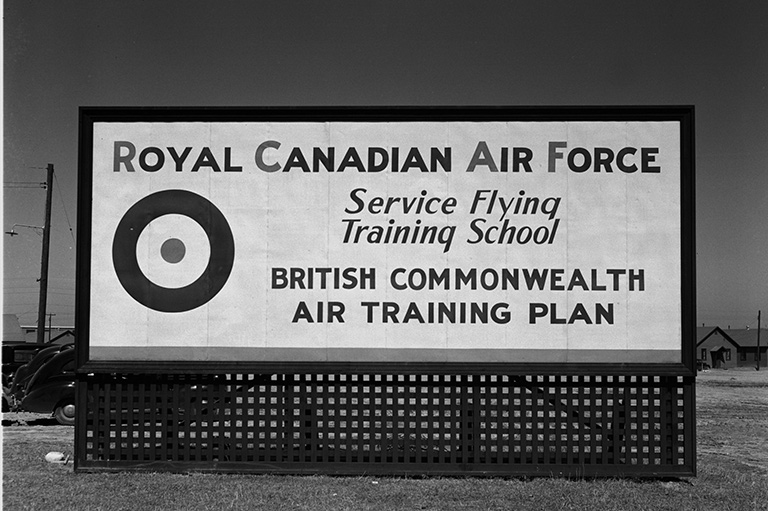
British Commonwealth Air Training Plan: The Aerodrome of Democracy
U.S. President Franklin Roosevelt called Canada the world’s “aerodrome of democracy” during the Second World War. And for no small measure: One of our greatest contributions to Allied victory was the British Commonwealth Air Training Plan (BCATP). The goal of the program was to provide facilities and training for aircrews from the Commonwealth, an endeavour for which Canada was ideally suited, being an ocean away from the hostilities in Europe with land and blue skies to spare.
To say that the BCATP was an enormous undertaking would be an understatement. In 1939, the RCAF consisted of four thousand personnel, less than twelve designated airfields, and only enough facilities to train a few hundred aircrews and ground crews annually. The expectation now was that it would train thousands — more than a hundred thousand, in fact.
By war’s end, more than 131,000 pilots, navigators, wireless operators, air gunners, flight engineers, and aircrew men and women had been trained for the Allied war effort. In Canada, schools and airfields were set up in 231 locations — many the precursor to facilities still in existence today in places like Chatham, New Brunswick, Picton, Ontario, Dauphin, Manitoba, and Moose Jaw, Saskatchewan. Over seven thousand hangars, barracks, and drill halls were built, with enough concrete used for the runways to pave a six-metre- or twenty-footwide highway from Ottawa to Vancouver. As Charles Gavan “Chubby” Power, the Canadian Minister of National Defence for Air, said to the House of Commons in 1942, “Wherever the British forces are attacking, there you will find graduates of our air training plans.”
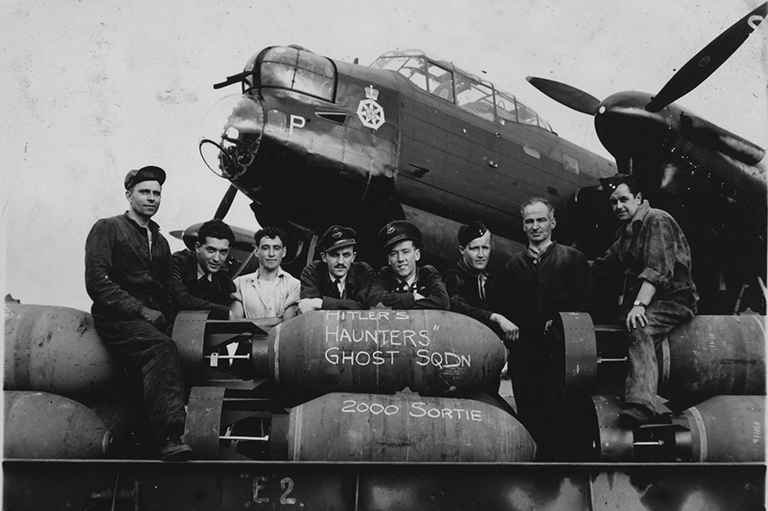
Avro Lancaster: The Heaviest Payload
Manufactured as a contemporary of the Handley Page Halifax and the Short Stirling, the Avro Lancaster was the most famous Allied bomber of the Second World War. The fourengine heavy bomber first flew in 1942 and soon became a favourite with Bomber Command in air raids over Europe.
Based on the earlier, largely unsuccessful Avro Manchester bomber, Avro upgraded the Lancaster by replacing two Rolls Royce Vulture engines with four Rolls Royce Merlin engines, proven in both Hurricanes and Spitfires. The upgrade was a success, and the reliable “Lanc” went on to carry the twelve-thousand-pound “Tallboy” and twenty-two-thousand-pound “Grand Slam” bombs — the largest payload of any bomber in the war.
In 1942, it was decided that the bomber should be produced in Canada by Victory Aircraft Ltd. in Malton, Ontario. Avro Lancaster B Mk. I, built in the United Kingdom, was flown to Canada to serve as the prototype. One year later, the first Canadian-built Lancaster Mk. X, also known as the “Ruhr Express,” made its journey back to England.
The Lancaster proved its mettle in precise bombing raids on the Ruhr Dams in Operation Chastise, 1943, by 617 Squadron RAF (“the Dambusters”), and with the sinking of the German battleship Tirpitz in 1944. The bomber delivered 608,612 long tons (618,378,000 kilograms) of bombs in 156,000 operational sorties. Thousands of Canadians served on RCAF and RAF Lancaster squadrons in England, including Pilot Officer Andrew Charles Mynarski, who was awarded a posthumous Victoria Cross for bravery during an attack on Cambrai, France. By late 1944, No. 6 Group RCAF operated thirteen squadrons of Lancasters. After the war, Canadian-built Lancasters served in various roles, including Arctic reconnaissance, maritime patrol, photo survey, search and rescue, and navigator training.
We hope you’ll help us continue to share fascinating stories about Canada’s past by making a donation to Canada’s History Society today.
We highlight our nation’s diverse past by telling stories that illuminate the people, places, and events that unite us as Canadians, and by making those stories accessible to everyone through our free online content.
We are a registered charity that depends on contributions from readers like you to share inspiring and informative stories with students and citizens of all ages — award-winning stories written by Canada’s top historians, authors, journalists, and history enthusiasts.
Any amount helps, or better yet, start a monthly donation today. Your support makes all the difference. Thank you!
Themes associated with this article
Advertisement
With 7 uniquely curated newsletters to choose from, we have something for everyone.
Save as much as 40% off the cover price! 4 issues per year as low as $29.95. Available in print and digital. Tariff-exempt!

